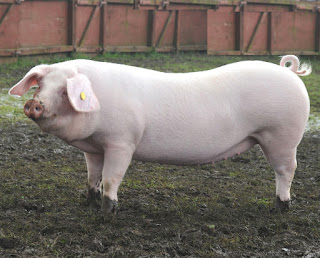What To Know About Pig Farming
Pigs can be raised in controlled or free environment, as a small- or large-scale business. But in whatever size, a prospective farmer would need inputs as to how to raise pigs efficientlyand in a more productive manner. Pigs may be raised in highly controlled environments (hog lots) indoor, in open spaces or barns as breeding sows or grown and sold for slaughter to butcher shops. Here are the aspects of pig rising that a grower must carefully consider:
READ ALSO: WHAT YOU NEED TO KNOW ABOUT BROILER
Choosing Piglets to Raise
Pig feeders can be obtained from stock breeders, and producers, in auctions and classified ads. Pigs are of different breeds some of them are well suited for specific environments, indoor or outdoor.
Crossbred pigs tend to grow faster, consume feed more efficiently and are vigorous. When buying a feeder, choose the large and healthy looking ones, at least 25 lbs. If you are choosing a male, which is observed to grow slightly faster than females, get one that is already castrated. Male or female, they are preferably immunized. Ask the breeder for health information and stock of the breeder.
READ ALSO: Fish Farming Plan
Proper Nutrition for Pigs
Pigs feed on both grains and meat. They can also be fed with cooked table scraps and vegetables. Corn is their most common food, but they could benefit from having a diet with protein from soybeans or cooked meat. Further, they grow faster with vitamins and other supplements. Piglets have higher protein requirements than mature ones. Feeds can be bought packaged and in bulk. Pigs must also have adequate supply of drinking water daily, about two to four gallons. Provide water either through a tub or automatic nipple waterer.
READ ALSO: Frogs And What Behind Its Living
Ideal Housing for Pigs
Pigs need housing to keep them warm during cold temperatures and to shelter them from excessive heat. Pigs are sensitive to heat and could die from heat stress. When housed indoors, temperature conditions must be well regulated. Controlled temperature conditions can help maximize growth.
Cooling mechanisms for pigs can come in the form of drip water system or a wallow (for a hog pen).
Pigs can be housed indoors in individual stalls, pens (in groups or batch) or in barns. Even if the pigs are raised outdoors they would need a shelter during cold and hot weathers. The housing should have a space for feeding and bedding.
READ ALSO: The Secret About Snakes
Pig Farm Sanitation
Sanitation is important to keep the pigs disease-free. A mechanism for easy cleaning and removal of waste is necessary for any type of pig housing. Some use slotted pen floors to make waste collection easy. Hosing a barn and removal of manure daily are recommended. So is keeping the floor dry to reduce odor.
After five to seven months, pigs are likely to reach ideal market weight of more than 200 lbs. They could be sold at livestock auctions or slaughtered for meat.
The pig industry is characterized by farms having 2 – 5 sows weaning 1-2 small litters yearly. This low productivity may be attributed to any of the following:
· A short sow productive life (sow culled early due to poor productivity).
· Generally, poor sow nutrition especially during the gestation and lactation periods.
· Poor housing that predispose the sows to stress
· Poor quality boars or mating system
· Poor feed quality, high feed prices leading to inadequate feeding
· Presence of sub-clinical reproductive diseases leading to low litter size and high
pre-weaning mortality
· Long fattening period leading to low returns
· Market demand fluctuation: during periods of high demand the country has had to import pork products to fill the gap.
READ ALSO: Lions And Their Nature



No comments:
Write comments